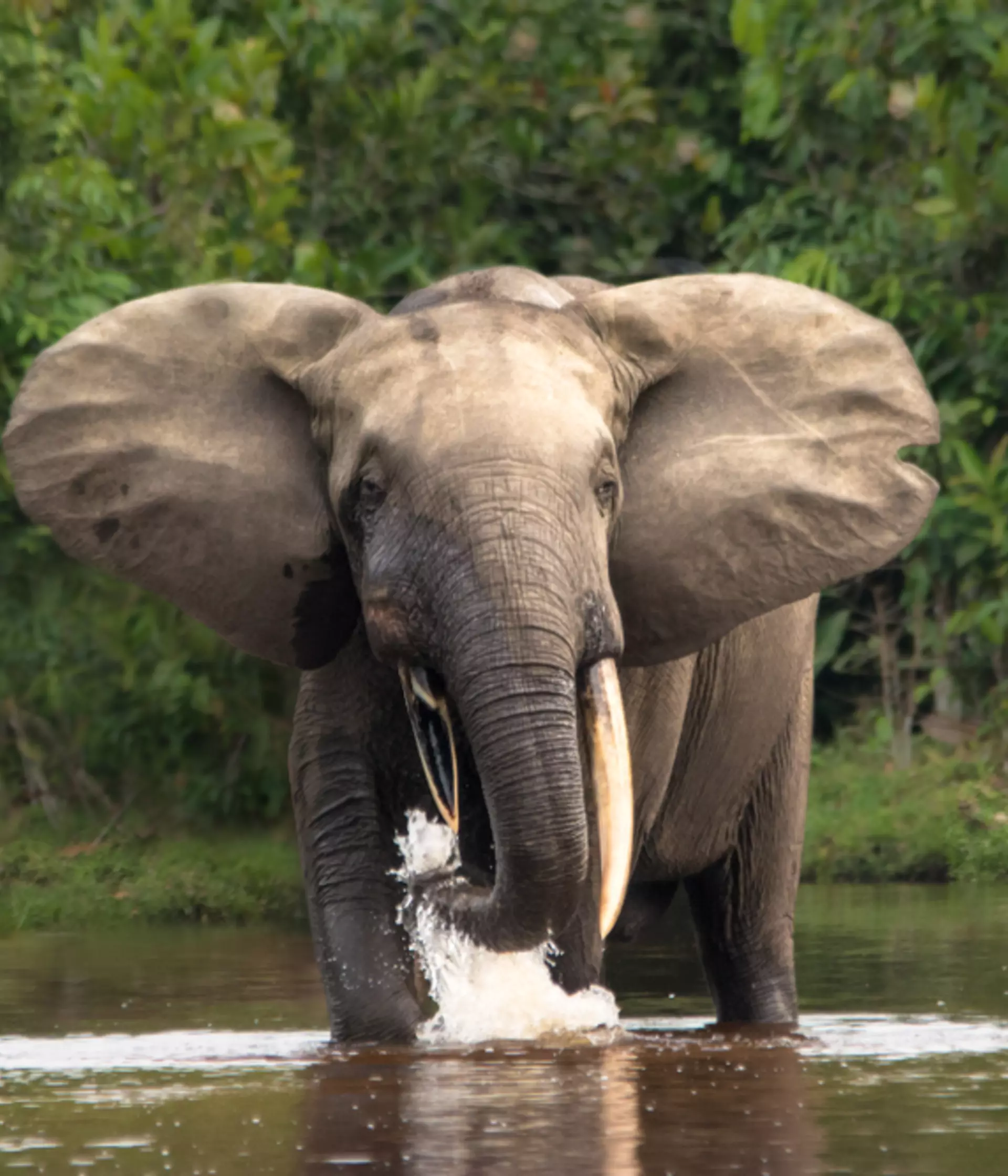The severe decline of forest elephants in Central Africa is largely a result of the unprecedented levels of poaching for the illegal ivory trade in recent years.
Historically, African elephants have always been treated as one species, listed on the IUCN Red List as 'Vulnerable'. In 2021, the IUCN announced that the African forest elephant (Loxodonta cyclotis) is a separate species from the African savannah elephant, following new research into the genetics of elephant populations. As a result of this, the African forest elephant was classed as 'Critically Endangered' on the IUCN Red List, following population declines of over 86% over a period of 31 years.
We're working to protect species worldwide - using our findings to bring species back from the brink and restore them into healthy habitats.
African forest elephant facts
- African forest elephant numbers have fallen by more than 86% over a period of 31 years. (Source: ICUN.)
- African forest elephants have a considerably slower reproductive rate than savanna elephants, meaning they cannot bounce back from population declines as quickly at the same rate.
- African forest elephants typically live between 50 and 60 years.
- Typically, they weigh between 3 and 6.6 tons.
What do African forest elephants look like?
- African forest elephants are smaller and darker than their savanna relative, with characteristically rounded ears and a hairy trunk.
- An African forest elephant's tusks are straighter and point downward, rather than outwards like savanna elephants'.)
Where do African forest elephants live?
African forest elephants inhabit the dense rainforests of West and Central Africa. Their tendency to dwell in dense forest habitats prohibits traditional counting methods such as visual identification. As a result, their population is usually estimated through "dung counts"—an analysis on the ground of the density and distribution of the faeces.
What do African forest elephants eat?
African forest elephants are herbivores. They forage on leaves, grasses, seeds, fruit, and tree bark. Since the diet of forest elephants is dominated by fruit, they play a crucial role in dispersing many tree species, particularly the seeds of large trees which tend to have high carbon content.
At ZSL, we find out why species are at risk, and what we can do about it. We're working for wildlife around the world, helping to protect and create a future for animals like the African elephant.
But we can’t do it without your help.
Protecting African forest elephants
Forest elephant conservation
The severe decline of forest elephants in Central Africa is largely a result of the unprecedented levels of poaching for the illegal ivory trade in recent years.
